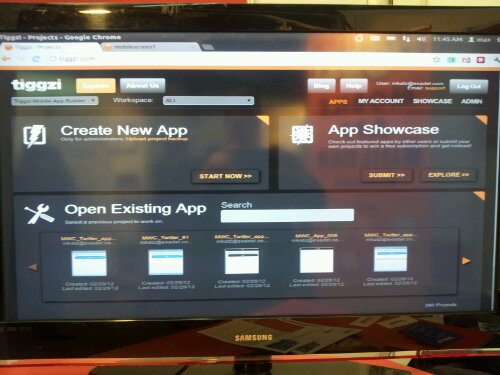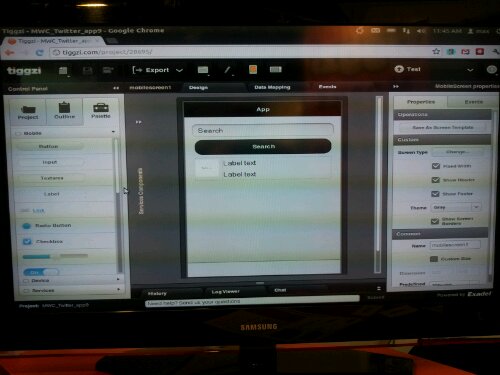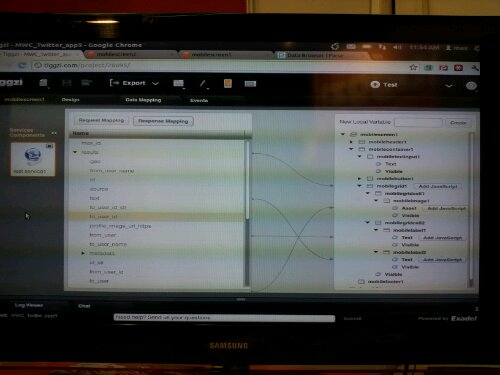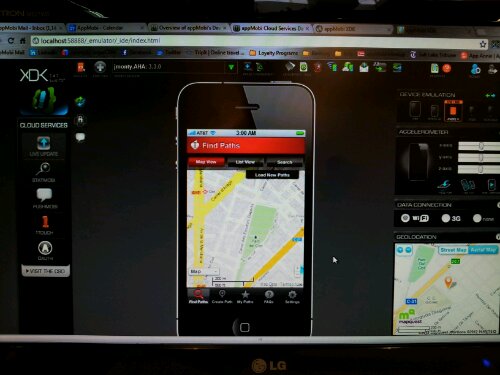Today starts another series on BYOD insights from industry leaders and influencers. My goal is to combine industry details with key takeaways that can be consumed quickly. I have no personal or financial affiliation with any of the parties involved with these interviews.
BYOD – Say Yes to Users!
 Yesterday I had the pleasure of speaking with Cimarron Buser, VP of Business Development, at Apperian. Buser is definitely a user’s advocate. It was very clear from our discussion that Buser’s 25 years of technical background and business management is a perfect fit for BYOD as his experience has led him to an emphasis on the end-user. Every aspect of our discussion revolved around how the user experience needs to be the primary concern and central justification. This perspective, a driving force behind BYOD, is a competitive strength for Buser and Apperian.
Yesterday I had the pleasure of speaking with Cimarron Buser, VP of Business Development, at Apperian. Buser is definitely a user’s advocate. It was very clear from our discussion that Buser’s 25 years of technical background and business management is a perfect fit for BYOD as his experience has led him to an emphasis on the end-user. Every aspect of our discussion revolved around how the user experience needs to be the primary concern and central justification. This perspective, a driving force behind BYOD, is a competitive strength for Buser and Apperian.
The focus on the user experience of BYOD and app management is not only Buser’s modis operandi, but also permeates Apperien’s raison d’etre as well. Apperian’s solution helps a full spectrum of apps, from those in the marketplaces, to custom native apps, to HTML 5 apps, become visible to employees. Buser sees this leading to increased user satisfaction and usage. He noted that “if companies can get users enthusiastic about what they are doing, they’ll find that all of a sudden employees are using the apps and they’ll see an ROI”. Buser pragmatically pointed out that this is good for the company as well because if employees aren’t “using the apps that organizations have built then all that effort is for not.” He is quick to state that this drive for app usage shouldn’t be at the expense of security though. Organizations “have to resolve security issues and management, that is a given. But a primary goal is to have users feel like they are in charge of the device they are carrying around.”
BYOD insight- Enthusiastic users equals enterprise ROI
As a mobile user’s advocate, Buser also extols the value of open platforms and policies over that of tightly managed ones that provide a limited experience. In regards to a company’s mobile policy he reason to “make them more open and permissive rather than shut down browsers or not allow Angry Birds. That is just anti-BYOD.” Instead, Buser thinks that companies should focus on creating great apps and educational resources. Then they will find they have better adoption by users. Buser believes that “if theCIOsays no, then security is actually going to get worse, not better, because users will just go around them.”
BYOD insight – When the CIO says no, your mobile security can go to zero
Apperian is in the business of managing apps and not devices. Buser believes that Mobile Application Management (MAM) can allow for greater employee device choice over Mobile Device Management (MDM). Buser tied this back to the history of BYOD in the enterprise. Buser mentioned that iOS was the first consumer device in the enterprise. The BYOD trend accelerated as employees started purchasing iPhones, iPads and Android devices from carriers and bringing them to work. Businesses showed some resistance to this addition because “many of these companies didn’t have the MDM solutions for it and they didn’t want the responsibility of management”. He continued by saying that what companies began to realize is that “if apps are secure, then MDM is less of an issue.” Buser believes that for many companies much of the functionality of MDM, such as remote wipe and device lock requirements, can be handled by policies in Microsoft Exchange and managed by Active Sync, or with free MDM-like solutions from Apple and Google.
BYOD Insight – MAM can provide more opportunity for BYOD to flourish.
Next up: How Buser and Apperian’s take Mobile Application Management to the next level
 Apperian is a mobile application management (MAM) company. The Apperian EASE platform delivers enterprise mobility services that today enable many of the world’s largest corporations to securely deploy and manage mobile apps for iOS and Android. Apperian is empowering the liberated enterprise to support the BYOD revolution.To learn more visit http://www.apperian.com/
Apperian is a mobile application management (MAM) company. The Apperian EASE platform delivers enterprise mobility services that today enable many of the world’s largest corporations to securely deploy and manage mobile apps for iOS and Android. Apperian is empowering the liberated enterprise to support the BYOD revolution.To learn more visit http://www.apperian.com/
Benjamin Robbins is one of the founders of AdminBridge – providing IT Administration from mobile devices. For more information visit http://adminbridge.com




 I want to give you a sneak peek into my conversation with
I want to give you a sneak peek into my conversation with 






 Yesterday I had the pleasure of speaking with
Yesterday I had the pleasure of speaking with 
